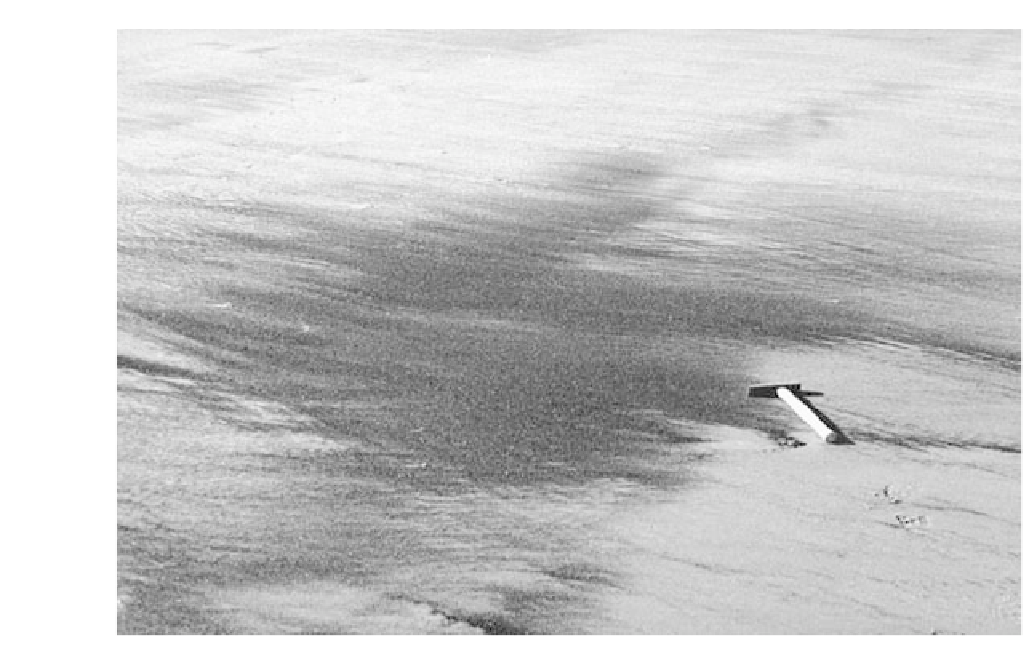Geoscience Reference
In-Depth Information
Fig. 7.7
Deposition of coal dust in the intertidal zone of the Severn estuary (Ogmore Beach, South Wales). This material represents the
reworking of contaminants from historic mining activity linked to the South Wales coalfield (French 1990).
Contaminant problems in estuaries and deltas
can, therefore, be particularly acute because they
act as key sediment sinks (see section 7.2.2). In
a similar way, any contaminant that enters the
system in solid (particulate) form will behave
as a sediment, and become deposited in the
same way. Such contaminants may derive from
dredging, where subtidal sediment is resuspended;
from agricultural activity, where exposed soils
may get washed into streams and eventually
estuaries; from industry, where tailings may
enter through discharge pipelines; from ports,
where the loading and offloading of ships leads
to spillage; and from mining operations, where
erosion of spoil tips leads to inputs of waste
materials.
Particulate contaminants may pose aesthetic
problems (Fig. 7.7), but of greater significance
from a water and environmental quality aspect
are the contaminants that enter an estuary or
delta as part of the water body (e.g. metals,
nutrients). Such contaminants may pass directly
out of the system in solution, or they may
become adsorbed onto clay particles or organic
debris (Fig. 7.8). Similarly, organic contamina-
tion such as oil or sewage will break down using
oxygen in the water body, thus increasing the
biological oxygen demand. The longer a con-
taminant is present within the estuary, the greater
the chance of it being broken down or adsorbed
onto a clay particle and incorporated within
the sediments. In terms of the latter, this means
that as clay flocs settle out to form mudflats,
they can carry with them significant amounts
of contaminants adsorbed to their surface. The
chemistry of this process can be very complex
(see Stum (1992) or Andrews et al. (1996) for
further details), but in essence metals (positive
charge) are transferred from the water body to
sediment (negative charge) (Fig. 7.8), and thus
contaminants become associated with particle
surfaces. Other modes of contaminant storage


